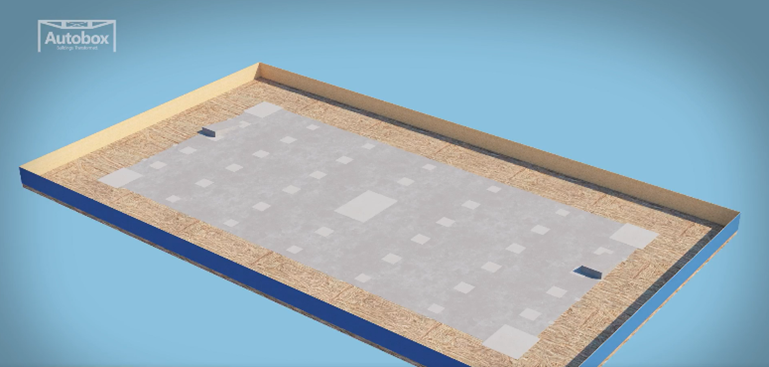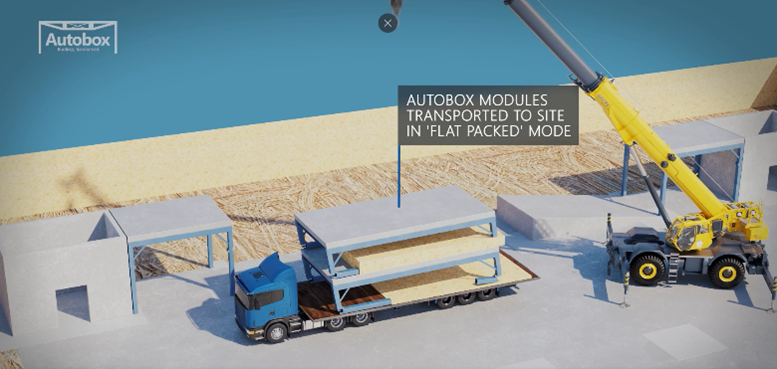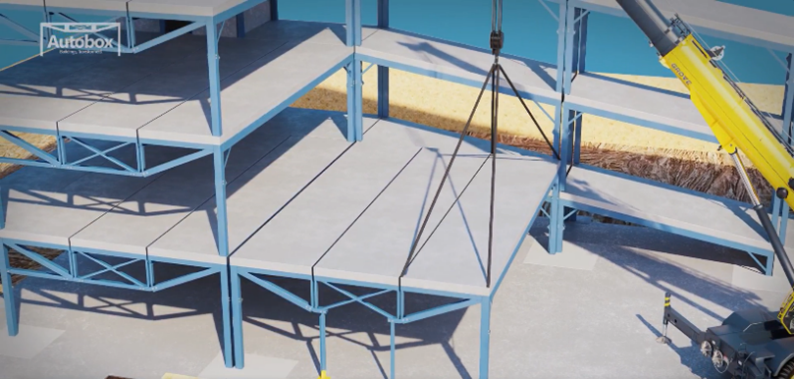- August 28, 2025
- 3:58 am
By Jason Langer
In an era defined by speed, adaptability, and sustainability, modular construction is experiencing a renaissance. Leading this evolution is Autobox, a groundbreaking system developed by Robert Bird Group (RBG) that reimagines how we design, deliver, and repurpose car parking structures – and much more.
A New Vision for Building Delivery
What if buildings and infrastructure could be assembled, disassembled, and reconfigured with the ease of a kit of parts? That question inspired the creation of Autobox – a modular construction system poised to revolutionise how we think about building delivery.
Introducing Autobox: A Paradigm Shift in Modular Design
Autobox is more than a modular solution. It’s a transformative volumetric system that combines the flexibility of modular design with the durability of traditional construction. Its unique ability to shift between flat-packed transport mode and a three-dimensional volumetric form sets it apart.
Key benefits include:
- Efficient logistics: Up to three or four modules per truck.
- Rapid assembly: Modules bolt together to form code-compliant, permanent structures.
- Design freedom: Accommodates any architectural layout or geometry.
Autobox empowers designers to rethink how buildings are conceived, constructed, and reused.
Transforming Car Parking Structure Construction
Autobox is particularly well-suited to multi-storey car parks in urban settings or projects with short- to medium-term needs. Traditional car parking structures are difficult to repurpose, but Autobox changes that.
Imagine building a 2,000-space car parking structure today, then scaling it down, relocating it, or converting it into something entirely different tomorrow. Its modularity and reusability make it ideal for precincts with evolving transport needs or events like the Brisbane 2032 Olympics, where temporary infrastructure is essential.
Autobox offers:
- Scalability: Build 2,000 carspaces now, remove or repurpose 1,000 later.
- Reusability: Modules can be relocated or sold, turning sunk costs into recoverable assets.
- Event-readiness: Deploy, use, and repurpose with ease.
As urban mobility evolves, with electric vehicles, expanded public transport, and shifting commuter patterns, Autobox provides a flexible, future-proof solution.
Cleaner, Faster Construction
Autobox streamlines the construction process with minimal disruption:
1. Site preparation: Groundworks and slab pouring.

2. Delivery: Flat-packed modules arrive by truck.

3. Assembly: Cranes install modules in sets of three – central first, then sides.

4. Connection: Modules are bolted together to form a stable structure.

No scaffolding, formwork, or tower cranes are required – reducing carbon emissions, costs, and construction time.
Beyond Car Parking Structures: A Universal Solution
Autobox’s potential extends well beyond parking structures. It’s being explored for:
- Data centres
- Airport terminals
- Residential and commercial buildings
- Shopping centres
- Stadiums
Its ability to deliver permanent-quality buildings with temporary flexibility makes it ideal for sectors demanding speed, scalability, and sustainability.
Modular Without Compromise
Traditional modular systems are constrained by transport dimensions, often requiring internal columns every 3–4 metres. Autobox overcomes this with wide, column-free spans in both directions, unlocking new architectural possibilities.
And while most systems transport one module per truck, Autobox flat-packs allow three or more, enhancing logistics, cost efficiency, and sustainability.
Supporting the Circular Economy
Autobox is designed for reuse and reconfiguration, aligning with circular economy principles. Unlike traditional demolition, which consumes energy and emits carbon – even when recycling – Autobox structures can be dismantled, relocated, and reassembled with minimal environmental impact. As electric transport and craneage become standard, relocating an Autobox structure could approach net-zero carbon.
Minimising Temporary Works
Autobox significantly reduces the need for temporary works, no scaffolding, formwork, or backpropping. This simplifies site logistics, enhances safety, and cuts both costs and emissions.
What It Means for Clients
For RBG’s clients, Autobox offers a compelling value proposition:
- Faster delivery via off-site fabrication
- Reduced on-site construction time and risk
- Lower upfront costs with future flexibility
- Smaller carbon footprint aligned with ESG goals
- De-risked investment – build now, adapt later
- Potential resale value of modular components
- Any fabricator can manufacture Autobox without needing any specialist equipment
Looking Ahead: Autobox in Australia and New Zealand
As industrialised construction gains momentum across ANZ, Autobox is poised to lead the next wave of modular innovation. From healthcare and education to transport and public infrastructure, Autobox offers a future-ready platform for sustainable, adaptive development.
Watch Autobox in Action
Explore our new Virtual Design and Construction (VDC) video showcasing Autobox in car parking structure construction. See how modules are delivered, assembled, and transformed into a fully functional multi-storey car parking structures.